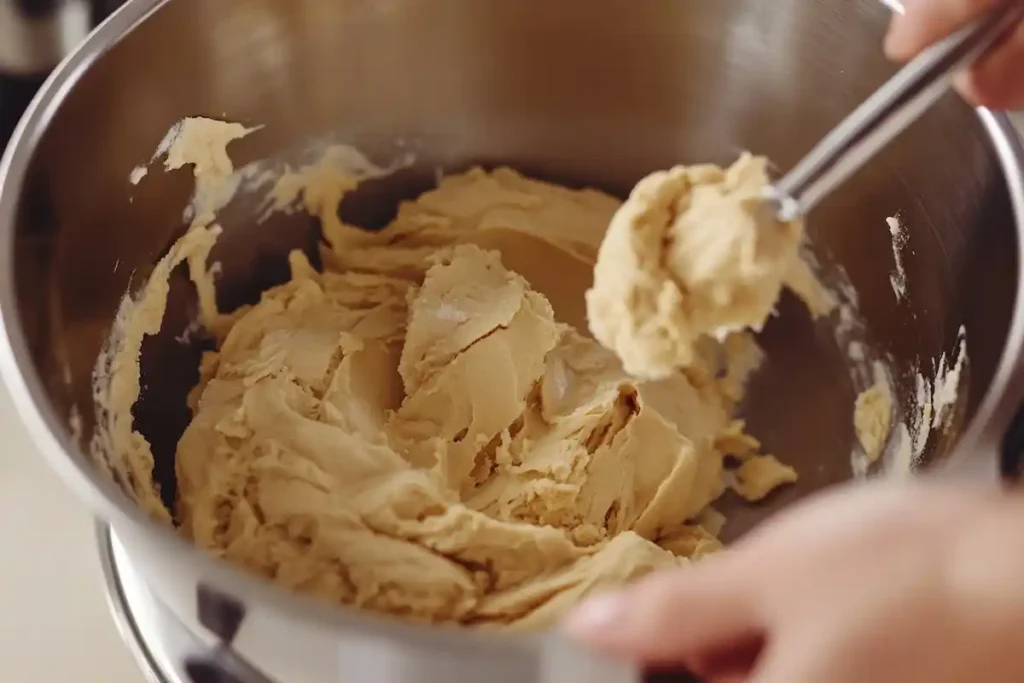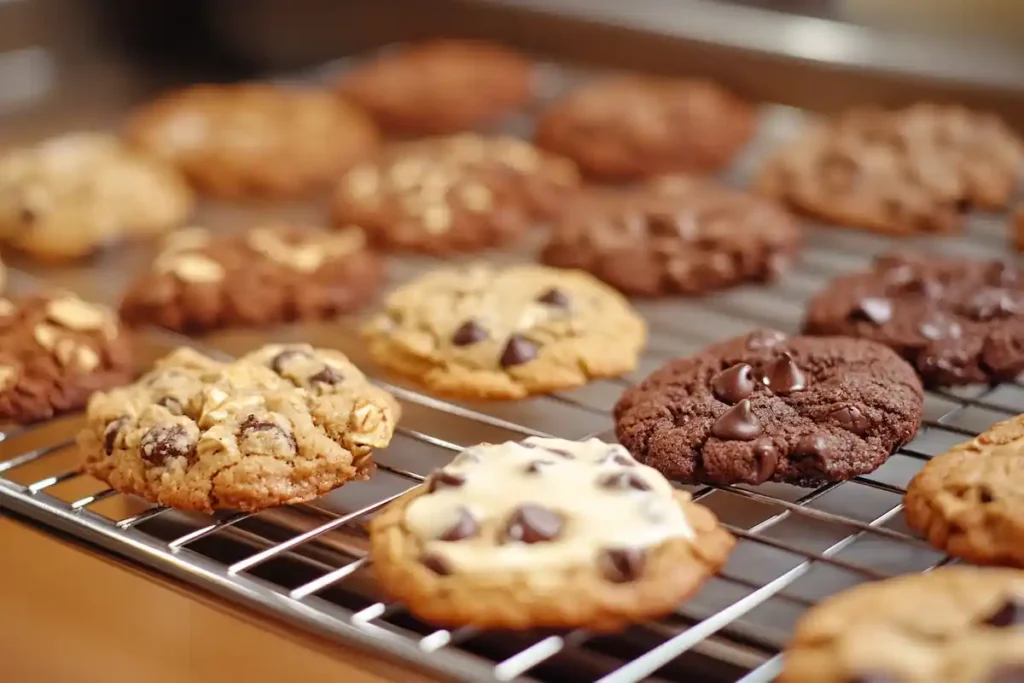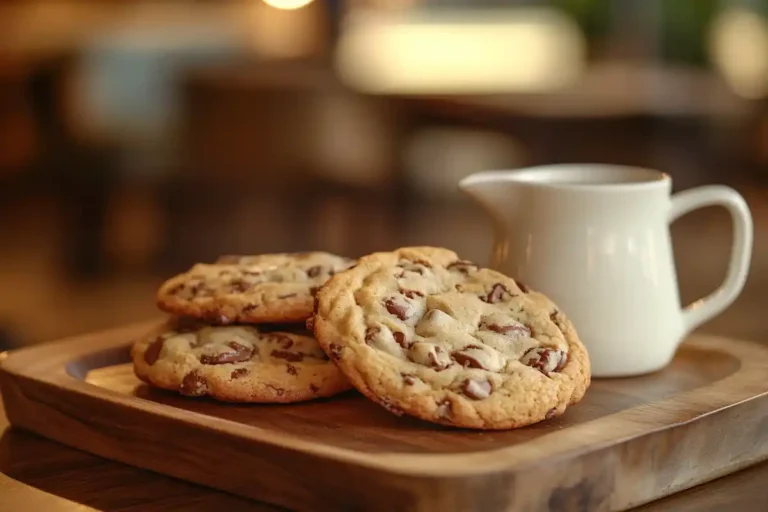Introduction
Have you ever wondered, what does cream do in cookies? From professional bakers to enthusiastic home cooks, many people are curious about how adding cream can elevate their baking game. In this ultimate guide, we will explore the science behind cream’s role in cookies, show you step-by-step instructions on how to incorporate cream in your dough, and provide expert tips for perfectly textured treats. By the end, you will know exactly why cream is a secret ingredient that can take your cookie recipes from ordinary to extraordinary.
1. The Basics: Understanding What Does Cream Do in Cookies
Cookies are beloved across the globe for their delightful taste and comforting texture. The addition of cream—whether it’s heavy cream, half-and-half, or even whipping cream—often remains a mystery to many. So, what does cream do in cookies at its core? Essentially, cream contributes fat, moisture, and sometimes acidity, all of which can change the way your cookie dough behaves. Let’s break this down further:
- Moisture and Tenderness
- Cream adds moisture to your dough, creating a softer, more tender cookie.
- When you bite into a cookie made with cream, you’ll notice a velvety crumb that almost melts in your mouth.
- Enriched Flavor
- The natural fats in cream enhance the cookie’s overall richness.
- Cream can add a subtle dairy sweetness, making each bite more indulgent.
- Baking Chemistry
- Fat plays a vital role in how your cookie dough spreads. Cream can slightly reduce spreading by balancing out the sugar and flour ratio.
- The proteins in cream can help bind ingredients together, resulting in a more cohesive dough.
- Texture Variations
- Cream can help develop a chewy texture in some recipes, particularly when combined with the right balance of flour and sugar.
- Alternatively, in recipes using the creaming method of butter and sugar, cream can contribute a crisp edge while keeping the center soft.
Ultimately, understanding what does cream do in cookies means recognizing the interplay of fats, moisture, and proteins. When used strategically, cream can drastically improve both the flavor and texture of your favorite treats.
2. A Look at Ingredients: Types of Cream for Cookies
To see what does cream do in cookies most effectively, it’s worth exploring the different types of cream you can use. Each variety brings its own unique properties to the dough:
2.1 Heavy Cream
Heavy cream has the highest fat content (typically 36% or more). This fat:
- Increases the richness of your cookie dough.
- Contributes to a tender, almost cake-like crumb.
- Helps promote browning on the cookie surface for an appealing golden color.
2.2 Whipping Cream
Whipping cream generally contains between 30-35% fat. It’s still rich enough to enhance cookie dough, though it’s slightly lighter than heavy cream:
- Produces a softer crumb but can yield cookies that spread a bit more.
- Works especially well in recipes designed for a chewy, soft center.
2.3 Half-and-Half
Half-and-half is a mixture of milk and cream, typically around 10-18% fat:
- Adds creaminess without making the cookies overly rich.
- Great for those who want some of the benefits of cream without the full calorie load.
2.4 Sour Cream or Crème Fraîche (Optional Variations)
Although not pure cream, sour cream or crème fraîche can be intriguing ingredients:
- Their tanginess can offer a flavor contrast in sweeter doughs.
- They may alter acidity levels, impacting how baking soda or baking powder reacts.
While these tangy creams can be interesting, the focus remains on the fundamental role of standard cream. Incorporating any of these types helps illustrate what does cream do in cookies on a spectrum of different textures and flavors.
3. Step-by-Step: How to Incorporate Cream in Your Cookie Dough
Now that you know what does cream do in cookies, let’s look at the actual process. Below is a step-by-step guide to using cream in your cookie dough, ensuring the right texture and flavor every time. This guide can be adapted to any recipe that calls for cream:

- Gather Your Ingredients
- Flour, sugar, salt, baking soda, or baking powder (as called for by the recipe)
- Butter, softened at room temperature
- Cream (heavy cream, whipping cream, or half-and-half)
- Eggs (if required)
- Vanilla extract or other flavorings
- Cream Butter and Sugar
- In most cookie recipes, you start by “creaming” the butter and sugar.
- Use an electric mixer to beat butter and sugar together until fluffy. This step forms air pockets that lead to a lighter cookie structure.
- Add the Cream
- Once your butter and sugar are light and fluffy, slowly pour in the cream.
- Mix on low speed to avoid splattering. The cream integrates with the butter-sugar mixture, adding fat and moisture.
- Incorporate Dry Ingredients
- Gently fold in your flour, baking soda, and salt.
- Overmixing can lead to tough cookies, so mix just until the dough comes together.
- Check Consistency
- Your dough should be soft and pliable, not runny or too firm.
- If the dough is too dry, you can add a tablespoon more of cream. If it’s too wet, add a small amount of flour.
- Chill the Dough (Optional)
- Some recipes benefit from chilling the dough for at least 30 minutes.
- Chilling helps the fats solidify, reducing spread while baking and deepening flavors.
- Shape and Bake
- Use a cookie scoop or spoon to portion out your dough.
- Bake at the recommended temperature, keeping an eye on the edges.
- Pull them out when they’re lightly golden, or according to your preference for crispness.
By following these steps, you’ll experience firsthand what does cream do in cookies—it not only adds depth of flavor but also improves the overall mouthfeel.
4. Tips & Tricks: Maximizing the Effects of Cream in Cookies
To take full advantage of what does cream do in cookies, you’ll want to apply these practical tips:
- Room Temperature Ingredients
- Bring your butter and cream to room temperature. This ensures they blend smoothly and evenly, which is crucial for a uniform texture.
- Measure Accurately
- Baking is a science. Use a kitchen scale to measure flour, sugar, and cream precisely.
- Even slight miscalculations can impact how your cookies bake.
- Taste Test with Different Cream Types
- Try heavy cream in one batch and half-and-half in another to see which you prefer.
- Note differences in taste, color, and texture.
- Combine Cream with Other Flavors
- Cream pairs exceptionally well with vanilla, chocolate, and caramel flavors.
- For extra flair, consider sprinkling some sea salt or drizzling melted chocolate.
- Don’t Skip the Chill
- When you chill dough containing cream, the fats solidify, reducing cookie spread.
- The flavors also have time to meld, resulting in a deeper, richer taste.
- Adjust Baking Times
- Cookies with added cream can brown slightly faster due to higher fat content. Keep an eye on them.
- If your oven runs hot, reduce the temperature by 5-10 degrees for more even baking.
By following these insights, you ensure the positive changes what does cream do in cookies remain front and center, leading to consistently delicious outcomes.
5. Variations: Exploring Creative Ways to Use Cream
While the foundation of what does cream do in cookies is all about moisture, flavor, and tenderness, creativity knows no bounds. Here are some fun variations to elevate your cookie game:

5.1 Chocolate Chip Cookies with Cream
- Technique: Prepare your standard chocolate chip cookie dough but replace a portion of the butter with an equal amount of heavy cream.
- Result: A chewier texture and enhanced chocolate notes because cream’s mild sweetness balances the bitterness of chocolate.
5.2 Cream-Filled Sandwich Cookies
- Technique: Use cream in the cookie dough and then whip up a cream-based filling.
- Result: A luxurious, double-cream treat with a smooth center that melts in your mouth.
5.3 Oatmeal Cookies with Cream
- Technique: Combine oats, raisins (or chocolate chips), and a dash of cream.
- Result: A moist, hearty texture perfect for those who love a more substantial cookie.
5.4 Spiced Cream Cookies
- Technique: Add warming spices like cinnamon, nutmeg, or ginger alongside cream.
- Result: The spices become more aromatic with cream’s richness, offering a comforting flavor profile.
Each variation showcases a distinct dimension of what does cream do in cookies, proving that cream is a versatile addition for bakers seeking new flavors and textures.
6. Nutritional Information: What Does Cream Do in Cookies?
Understanding the nutritional impact of adding cream to cookies is essential for those mindful of their diet. Since cream contributes fat, calories, and moisture, it can slightly alter the macronutrient composition of cookies. Below is an estimated nutritional breakdown per 100g of cookies made with cream, considering a standard butter-based cookie recipe with heavy cream.
| Nutrient | Amount (Per 100g) |
|---|---|
| Calories | 480 kcal |
| Total Fat | 24g |
| Saturated Fat | 14g |
| Cholesterol | 60mg |
| Carbohydrates | 58g |
| Sugar | 35g |
| Protein | 5g |
| Fiber | 1g |
| Sodium | 200mg |
| Calcium | 45mg |
| Iron | 1.2mg |
Key Takeaways from the Nutritional Breakdown
- Higher in Calories – Cream adds extra calories due to its fat content, making cookies richer but also more energy-dense.
- Increased Fat Content – The added cream contributes to both total and saturated fats, enhancing flavor but also affecting dietary intake.
- Boosts Moisture Retention – While cream does not significantly increase protein, it contributes to a better mouthfeel by softening the texture.
- Sugar Content Remains High – Since most cookie recipes rely on sugar for sweetness, the addition of cream does not reduce sugar levels but may balance overall richness.
By keeping an eye on portion sizes, you can enjoy the delicious benefits of cookies made with cream while maintaining a balanced diet.
7. Troubleshooting & Common Mistakes
Even once you grasp what does cream do in cookies, issues can still arise. Here are common pitfalls and how to fix them:
- Overly Spread Cookies
- Cause: Dough is too warm or has too much fat.
- Fix: Chill the dough or reduce the cream slightly.
- Dry, Crumbly Texture
- Cause: Excess flour or insufficient cream.
- Fix: Ensure you measure ingredients accurately. You can also add a little more cream if the dough feels too stiff.
- Bland Flavor
- Cause: Not enough salt, vanilla, or other flavorings.
- Fix: Increase vanilla or experiment with add-ins like chocolate chips or spices.
- Undercooked Center
- Cause: Oven temperature too high, causing the exterior to brown too quickly.
- Fix: Lower the temperature by 5-10 degrees. Bake longer at a slightly lower heat for even cooking.
- Greasy Cookies
- Cause: Overmixing or using too much cream.
- Fix: Mix your dough just until combined and be precise with cream measurements.
Avoid these mistakes, and you’ll capitalize on everything what does cream do in cookies to achieve the perfect batch every time.
8. Expert Insights: The Science Behind Creaming
You might have heard about “the creaming method” in baking. This is different from simply adding a splash of cream, but it’s closely related to the concept of what does cream do in cookies. In the classic creaming method:
- Butter and Sugar are Beaten
- This step traps tiny air bubbles, helping cookies rise and maintain a light, delicate texture.
- Air Incorporation
- The air pockets expand during baking, contributing to the cookie’s height and fluffiness.
- Fats Solidify
- By chilling the dough, the fats become solid, leading to controlled spreading.
- Protein and Sugar Interaction
- The sugar breaks down proteins in the flour, tenderizing the cookie. When cream is added, it collaborates with the butter to form a more cohesive fat matrix.
While the phrase what does cream do in cookies often refers to liquid cream, the overall principle of “creaming” is essential for understanding how any fat (like butter) interacts with sugars to shape cookie texture. Realizing these principles allows you to manipulate recipes to get the exact outcome you crave—be that a crisp edge, a chewy center, or a melt-in-your-mouth experience.
9. Frequently Asked Questions About What Does Cream do in Cookies
Below are the top four questions from People Also Ask (PAA) about what does cream do in cookies, with concise answers:
8.1 What does adding cream to cookies do?
Adding cream to cookies boosts moisture and fat content, resulting in a softer crumb and richer taste. It can also help balance sweetness and create a smoother mouthfeel.
8.2 What does creaming do for cookies?
Creaming in cookies helps incorporate air into the dough by blending butter and sugar until fluffy. This process leads to lighter, more tender cookies and can enhance overall texture and lift.
8.3 What does cream do in baking?
In baking, cream adds richness, moisture, and fat, helping to tenderize the crumb. It can also influence how a baked good browns and affects flavors by balancing sweetness or adding subtle dairy notes.
8.4 What happens if you don’t cream butter in cookies?
If you skip creaming butter in cookies, you miss out on crucial air incorporation, which can lead to denser, heavier cookies. The sugar won’t disperse as evenly, potentially affecting both texture and flavor.
10. Bringing It All Together: Why Cream Matters
So, what does cream do in cookies in the broader sense? It refines texture, enriches flavor, and enables bakers to control how cookies spread and brown. Cream can act as a magical ingredient, transforming a basic cookie recipe into a mouthwatering delight. The next time you whip up a batch, remember:
- A touch of cream can add a luxurious mouthfeel.
- Precise measurement and technique ensure consistent results.
- Varying the type of cream allows you to experiment with different levels of richness.
Whether you are making chocolate chip cookies, oatmeal variations, or spiced treats, adding cream could be the game-changer in your baking routine.
Conclusion
We’ve taken a detailed journey to uncover what does cream do in cookies and how to maximize its benefits in baking. From understanding different cream types to mastering the classic creaming method, you now have the essential knowledge to create cookies with superior texture, rich flavor, and an irresistibly soft or crispy bite, depending on your preference. By carefully selecting the right type of cream, measuring ingredients with precision, and implementing expert baking techniques, you can achieve bakery-quality cookies right in your own kitchen.
Whether you prefer chewy chocolate chip cookies, delicate shortbread, or crispy sugar cookies, knowing what does cream do in cookies allows you to control moisture, structure, and richness with ease. Cream’s ability to enhance tenderness and balance flavors makes it a versatile ingredient that should not be overlooked. If you’ve ever struggled with dry, crumbly cookies or dough that spreads too much, incorporating cream into your baking process could be the simple fix that transforms your results.
Beyond its impact on texture, what does cream do in cookies also extends to the science of baking. By interacting with fats, sugars, and leavening agents, cream plays a crucial role in achieving the perfect consistency and mouthfeel. When used strategically, it helps create a harmonious blend of ingredients, ensuring that every bite is as delightful as the last.
Ultimately, understanding what does cream do in cookies empowers you to experiment, refine your baking skills, and customize your recipes for the best possible results. The next time you bake a batch of cookies, consider the power of cream and how it can elevate your treats to new levels of deliciousness. With these insights and techniques, your cookies will not only taste better but also look and feel like they came straight from a professional bakery.

